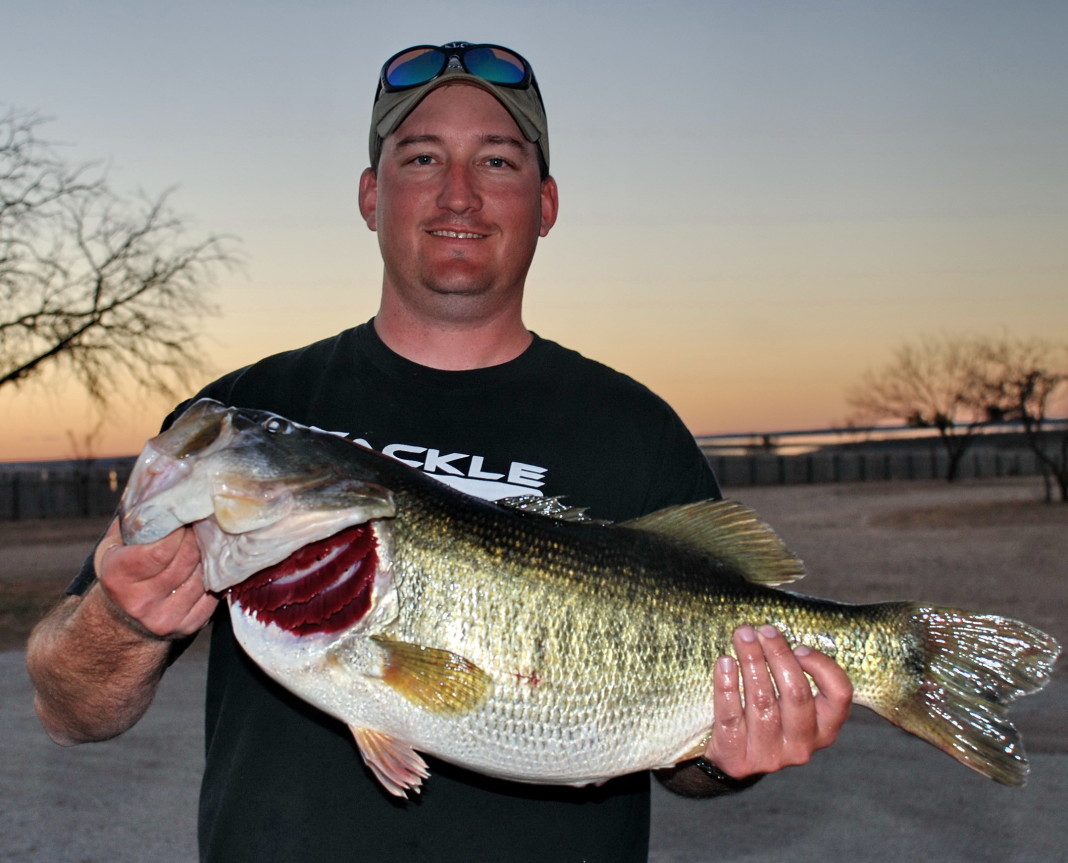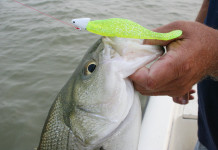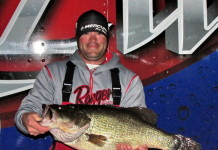As the youngster carefully cranked the Zebco, the jack-in-the-box anticipation took hold that accompanies bass fishing in Texas.
He knew something might happen. It was just a matter of when.
And how loud.
The pale, gray Slug-Go at the end of the line fluttered and twitched as it skittered along the surface from the shallows into slightly deeper water. A flick of the rod tip here and a long pause there made the pencil-shape projectile appear full of zest one moment and devoid of life the next.
Darn.
No takers.
The 10-year-old angler again heaved the lure toward the shallows, bouncing it off a weathered log sitting on the edge of the bank. The lifeless plastic remained motionless for a moment as if it had a mind of its own and knew that if it didn’t move, it wouldn’t draw the attention of a scaly monster below.
As the boy slowly retrieved the bait, pop went the weasel, and a green shape streaked up from below, slamming the lure with its gaping mouth and breaking the surface.
It was only a 5-pounder, but when the largemouth ended up in my shaking hands that spring day near Brownwood, it might as well have been the state record.
As the weather warms and water temperatures steadily rise — reaching 60 degrees or more — bass anglers across the state salivate at the thought of spending as much time as possible on the water. That’s because spring is the magic season for catching big bass, and this year should be no different. It’s a good bet there will be many anglers who will haul in the biggest lunker of their lives during the next month at any number of Texas lakes.
Bass of all varieties — largemouth, smallmouth and spotted — move into shallow water in the spring to breed. Actually a species in the sunfish family, these fish all go through much the same routine when it comes to mating. A female will lay her eggs — which can number from a couple of thousand to tens of thousands — and a male will then fertilize them.
The male also will stand guard over the nest through the incubation process, including when the fry hatch. The beginning diet of the fry is zooplankton, a microscopic organism that floats through the water column.
However, as bass begin to grow, their diets also will expand to encompass almost anything that swims, floats or sinks and doesn’t bite back too hard.
The largemouth, the most sought-after fish species in America, is the most gluttonous and persistent eater in the aquatic world. Perhaps that’s why so many anglers target the fish. It grows large, eats large — and more importantly — lives large. In its world, the largemouth is king. While small bass can be eaten by birds or other wildlife, a mature largemouth is an amazing creature with no natural enemies.
I’ve heard plenty of fish tales, perhaps none more than on the subject of the largemouth’s undiscerning eye — and gut — for a savory meal.
There have been accounts of bass plucking anything from ducklings and large insects from the surface to devouring all types of aquatic dwellers, including frogs, lizards, crawdads — and other fish. In fact, some of the best bass baits mimic animals that inhabit the same ecosystems.
Just stroll down the aisle of any sporting goods store and you’ll often find wide variations on any number of lures that look mighty tasty until the hook takes root.
Based on the largemouth’s unrestrained feeding habits and its predictable locale from now through early summer, even someone without a professional angler’s skill set can find good-size fish on many bodies of water.
In cooler months, bass tend to become much more lethargic as you would expect them to. Unless you’re fishing on a power-plant lake, fall and winter definitely will change your strategy from that of spring and summer.
The most positive thing to know about technique this time of year is fish loafing in the shallows near beds will attack almost any intruder. They may just be trying to keep that phantom from getting close to their eggs, but they will strike the same as if they’re trying to pack on some calories.
Another plus to spring bass fishing is a wide variety of lures and baits can be deadly in a number of situations. Anything from soft-skirted jigs, spinner baits and Rat-L-Traps to plastic lizards, worms and swimbaits often can pry even the most stubborn bass from their lairs. It’s just a matter of matching what you’ve got to the scenario and the moods of the fish.
While the fish tend to move shallower in the spring, they don’t lose their wits: There remain some that will be easy to catch, others that will be impossible to hook and many more that make you want to scratch your head in disbelief.
The greatest part about spring bass fishing is the pursuit lets your imagination run wild and your body race with anticipation. Sure there are always lunkers out there, but they’re never as accessible as they are right now to the average angler.
And you never know. You might just see a big bass eat something you never thought they could.
Sight casting allows Texas bass fishing anglers to have a large day
Small Texas lakes are hidden gems in big bass fishing pursuits
Bass fishing tips for finicky fish stack the deck in your favor






















